Judi Lynn
Judi Lynn's JournalTed Cruz's father an early Fidel Castro revolutionary, memoir claims
Ted Cruz's father an early Fidel Castro revolutionary, memoir claims
Texas senator writes that father Rafael Cruz led a group of insurgents staging a sabotage against the Cuban dictator Batista and was eventually tortured
Associated Press in Austin, Texas
Saturday 27 June 2015 15.44 EDT
Texas Republican Senator Ted Cruz’s father was a 1950s Cuban revolutionary who longed to slip into the island’s eastern mountains and join Fidel Castro’s guerrilla army.
At 17, Rafael Cruz led a group of insurgents staging urban sabotage against the Cuban dictator Fulgencio Batista. Cruz was eventually jailed and tortured, and upon his release wanted the underground to help him personally reach Castro’s camp in the Sierra Maestra highlands.
“My dad asked if he could join Castro in the mountains and keep fighting,” the firebrand Republican presidential candidate writes in his book, A Time For Truth, which will be released on Tuesday. “But he was told there was no way to get to the rebels.”
Instead, the elder Cruz bribed his way to a Cuban exit visa and headed to the University of Texas.
More:
http://www.theguardian.com/us-news/2015/jun/27/ted-cruz-memoir-father-cuba-revolutionary-fidel-castro
[center]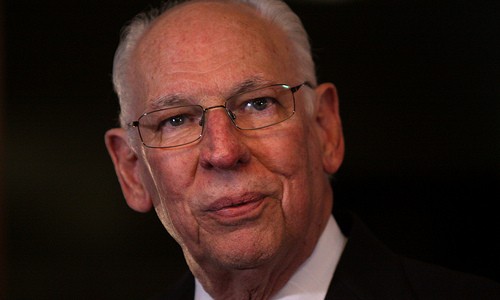
Rafael Cruz
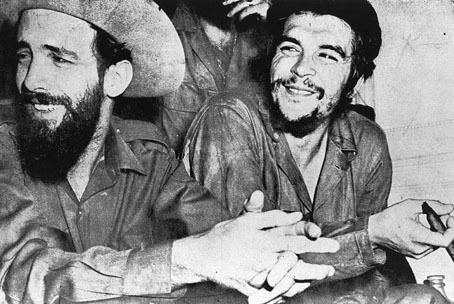
Camilo Cienfuegos, Che Guevara, waiting for Rafael Cruz to arrive.
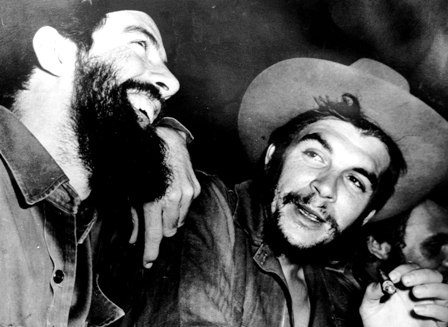
Camilo Cienfuegos, Che Guevara, wearing each other's hat, waiting for Rafael Cruz to arrive.
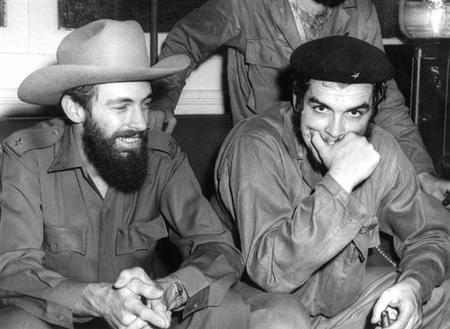
Camilo Cienfuegos, Che Guevara, still waiting.

"They had to struggle on without Rafael.

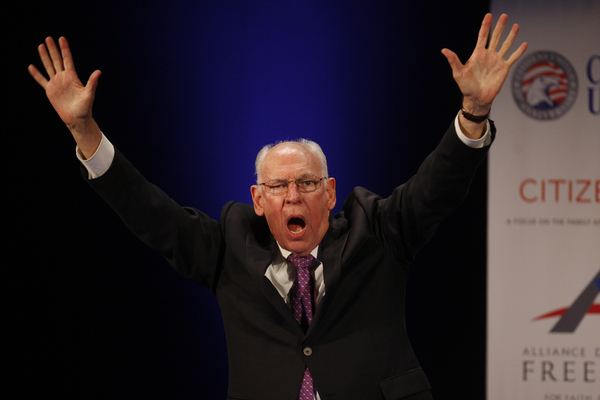
He went North to spread the word of The Divinity.[/center]
The Honduran meltdown: Made in USA
The Honduran meltdown: Made in USA
Six years after the coup in Honduras, it's time for another history lesson.
28 Jun 2015 09:00 GMT
Belen Fernandez is the author of The Imperial Messenger: Thomas Friedman at Work, published by Verso. She is a contributing editor at Jacobin Magazine.
@MariaBelen_Fdez
In May 2005, US Deputy Secretary of State Robert Zoellick appeared at the conservative Heritage Foundation in Washington to rally support for CAFTA, a free trade agreement between the US, the Central American countries, and the Dominican Republic.
In his remarks, Zoellick played up the notion that, for Central America and the DR, the agreement would "strengthen democracy through economic growth and open societies based on the rule of law", while also entailing various perks for the gringos; a T-shirt reading "Made in Honduras", he enthused, would likely contain over 60 percent US content.
The deputy secretary and future president of the World Bank went as far as to assert that, "In many ways, CAFTA is the logical culmination of 20 years of democratic and social progress in Central America, nurtured and encouraged by the United States."Never mind that, 20-some years ago, the United States was nurturing things like Battalion 3-16, described by the Baltimore Sun as a "CIA-trained military unit that terrorised Honduras for much of the 1980s".
Anything but the communists
To be sure, much of Honduras' contemporary plight - while perhaps appearing on the surface, like Zoellick's T-shirt, to be a domestic creation - is in fact Made in USA.
More:
http://www.aljazeera.com/indepth/opinion/2015/06/honduran-meltdown-usa-150628064420182.html
LA forum:
http://www.democraticunderground.com/110841837
The Kuna: the endangered last tribe of the Caribbean – in pictures
The Kuna: the endangered last tribe of the Caribbean – in pictures
Photographer Eric Lafforgue documents the island tribe, whose existence is threatened by rising sea levels. The Kuna live on the San Blas islands off the coast of Panama – which have one of the world’s highest populations of albinos
Eric Lafforgue/Barcroft Media
Friday 26 June 2015 06.24 EDT
[center]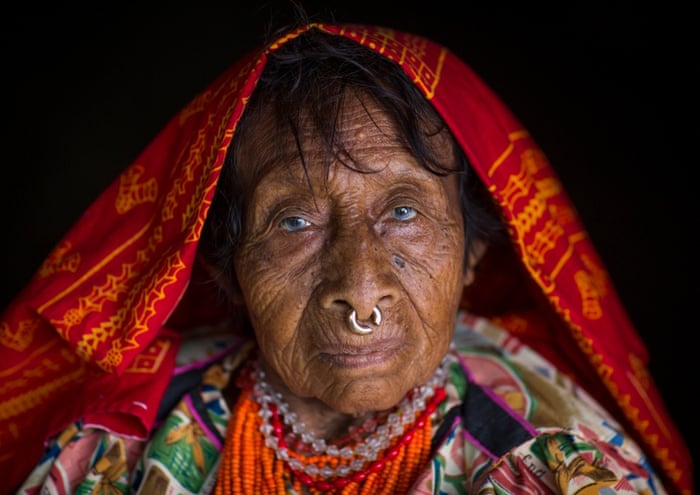
There are roughly 50,000 Kuna, who are one of the largest remaining indigenous South American tribes

They live in communities spread out across the San Blas islands off the coast of Panama in the Caribbean
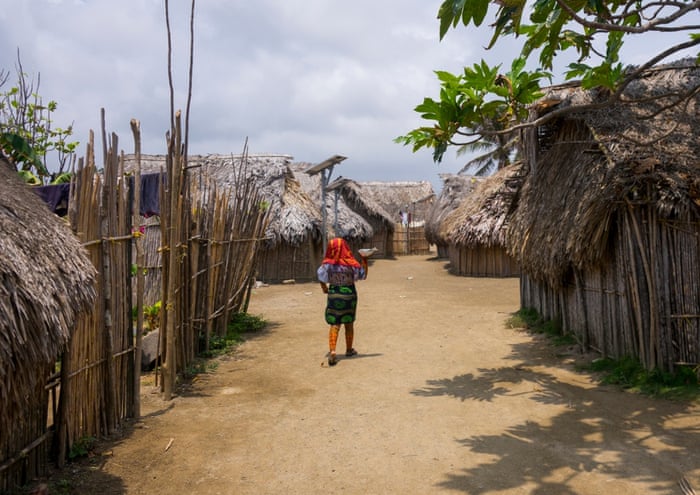
The Kuna have simple lifestyles and maintain their unique traditions, living in huts made of palm fronds[/center]
More:
http://www.theguardian.com/artanddesign/gallery/2015/jun/26/the-kuna-the-endangered-last-tribe-of-the-caribbean-in-pictures
Why the US and Brazil Should Talk About Race
June 25, 2015
The Shared Historical Legacies of Slavery and Institutionalized Racism
Why the US and Brazil Should Talk About Race
by EDWARD F. SHORE
On June 30, 2015, Brazilian President Dilma Rousseff will make her first trip to Washington D.C. She will meet with President Barack Obama at the White House almost two years after canceling a State Visit when reports surfaced that the N.S.A. had spied on the leftist leader’s phone calls. The two heads of state will discuss a range of topics, including climate change, energy, educational exchanges, science, and technology. Yet missing from the agenda is a disturbing issue that has confounded the two largest economies in the Americas: racial discrimination. Although the BRICS nation has advanced a number of public policies to redress racial inequality in recent years, the Obama administration has done little to stem the tide of a decades-long campaign waged by the right against the signature achievements of the Civil Rights Movement.
Historical legacies of slavery and institutionalized racism have long tied Brazil and the United States together. Both were major players in the Atlantic slave trade. Whereas the U.S. imported an estimated 400,000 slaves, an astonishing five million African-born men, women, and children were imported to toil as slaves in Brazil between roughly 1600 and 1888. Activists in the United States and Brazil mobilized to demand civil rights and racial equality during the 1960s and 1970s. Although observers are quick to highlight their differences, namely that Jim Crow style segregation never materialized in Brazil where half of the nation’s 200 million people are afro-descendants, observers acknowledge a shared experience of discrimination on the basis of race.
For instance, a 2012 Latin American Bureau report disclosed that 70 percent of those living below the poverty line in Brazil were black. Afro-Brazilians earned roughly half of what their white counterparts earned whereas blacks in the U.S. earned 75 percent of what whites earned. Meanwhile, 18 percent of African Americans attended a four-year university in 2009 compared to only 6.6 percent of Afro-Brazilians. High school graduation rates diverged dramatically: 62 percent of black students in the United States graduated compared to less than 33 percent of black students in Brazil. At the same time, the criminalization of black bodies has plagued both countries. African Americans account for 40 percent of the nation’s 2.1 million male inmates. In Brazil, statistics regarding the nation’s 564,000 inmates are notoriously difficult to obtain, but observers maintain that the vast majority of its prison population are young, black, and poor.
Although racial disparities are similar, the two global powers have trended in opposite directions in one major area: the law. In recent years the U.S. Supreme Court gutted the Voting Rights Act and criticized affirmative action in its 2013 ruling in the case of Fisher v. University of Texas. On the other hand, three consecutive Brazilian presidents- Fernando Henrique Cardoso (1994-2002), a conservative, Lula da Silva (2002-2010), a progressive, and his Workers’ Party successor, Dilma Rousseff (2010-present), have enacted a range of affirmative action policies that have eclipsed both the scope and scale of their U.S. antecedents.
More:
http://www.counterpunch.org/2015/06/25/why-the-us-and-brazil-should-talk-about-race/
El Salvador, the country where women get jailed for having a miscarriage
El Salvador, the country where women get jailed for having a miscarriage
In the UK, it can feel like Latin America had simply been wiped off the map, but women there are facing terrible injustices that completely escape our attention.
by Caroline Criado-Perez Published 25 June, 2015 - 16:43
When Guadalupe Vasquez was raped by her employer’s neighbour, she didn’t report it. She came from a poor family and was only 17. She didn’t think she would be believed – and in any case, the neighbour had warned her not to tell anyone.
She decided to keep the baby. She had little other choice, being from El Salvador, where abortion is illegal under all circumstances, including rape, incest, and even when the mother’s life is in danger, or the foetus is not viable. But Vasquez seems to have loved her baby, despite his violating conception. She prepared for his birth. She gave him a name: Gabriel. Her body started to change; her belly started to swell.
And then she started bleeding. When Vasquez felt the intense pain across her back and abdomen, she asked her employer to let her go to hospital. The employer refused. A few hours later, Guadelupe gave birth to Gabriel on her own in her room. He cried once, and then died.
Faced with a dead baby and a still bleeding mother, Vasquez’s employer finally allowed her to go to hospital. “I don’t want to deal with two dead in my house.” At the public hospital, Vasquez was treated for her haemorrhage. Her life was saved. And then the police were called.
More:
http://www.newstatesman.com/politics/2015/06/el-salvador-country-where-women-get-jailed-having-miscarriage
Grenada Rebuilds Barrier Reefs
Grenada Rebuilds Barrier Reefs
By Desmond Brown

[font size=1]
Globally, 75 percent of coral reefs are under threat from overfishing, habitat destruction, pollution and acidification of the
seas due to climate change. Credit: Bigstock
[/font]
BASSETERRE, St. Kitts, Jun 24 2015 (IPS) - The Eastern Caribbean nation of Grenada is following the example of its bigger neighbours Belize and Jamaica in taking action to restore coral reefs, which serve as frontline barriers against storm waves. Coral reefs also play an extremely important role in the Caribbean tourism economy, as well as in food production and food security, but they have been adversely affected by rising sea temperatures and pollution.
An assessment of the vulnerability of Grenada, conducted between September and October 2014, identified several areas that are particularly vulnerable that did not already have interventions. Two such areas were Grand Anse on mainland Grenada and the Windward community on the sister island Carriacou.
“What we will be doing through this project is actually establishing coral nurseries and this is the first time it will be done in the Organisation of Eastern Caribbean States (OECS),” Kerricia Hobson, Project Manager in the Environment Division in Grenada’s Ministry of Agriculture, Lands, Forestry, Fisheries and the Environment, told IPS. “We will actually create coral nurseries where we will harvest live coral from some of the healthy colonies around the island. We will propagate them in the nursery and when they are sufficiently mature, we will plant them on existing reef structures.”
The reef restoration is being done jointly by the Government of Grenada and the United Nations Environment Programme (UNEP) under the Coastal Eco-system Based Adaptation in Small Island Developing States (Coastal EBA Project).
More:
http://www.ipsnews.net/2015/06/grenada-rebuilds-barrier-reefs/
Prosecution admits Colombia’s military command never investigated for civilian killings
Prosecution admits Colombia’s military command never investigated for civilian killings
Posted by Adriaan Alsema on Jun 24, 2015
Neither the commander of Colombia’s Armed Forces, nor the National Army commander, are or have been investigated over accusations they were implicated in the killing of civilians.
Armed Forces commander General Juan Pablo Rodriguez and National Army commander General Jaime Lasprilla were most recently accused of their involvement in the killing of dozens of civilians by Human Rights Watch on Wednesday.
The current top commanders of the military led brigades in different parts of the country that were accused of carrying out at least 76 of the killings while briefly under their command.
The Colombian military is suspected of having carried out between 3,000 and 4,500 civilians, mostly during the administration of former President Alvaro Uribe and most intensely when Colombia’s current president, Juan Manuel Santos, was Minister of Defense.
More:
http://colombiareports.com/prosecution-admits-colombias-military-command-not-investigated-for-civilian-killings/
(My emphasis.)
Resistance in Honduras Alive and Jumping
Resistance in Honduras Alive and Jumping
by David Swanson / June 23rd, 2015
June 28 will mark 6 years since the U.S.-backed military coup in Honduras took the people’s government away from them. Thousands of people are still in the streets every week demanding that the wrongful president step down.”Whoever’s not jumping supports the coup!” is the shout as a sea of people leaps repeatedly into the air. The makers of an amazing new film called Resistencia: The Fight for the Aguan Valley, will be allowing anyone to view it online for free for two weeks. I recommend you do so.
[center] [/center]
[/center]
Honduras has not simply turned into the worst home of violent crime. And the people have not simply fled to the U.S. border (much compassion they’d receive there!) — No, thousands and thousands of people in this little nation have taken back their land, occupied it, created communities, and built a future, with or without the coup.
President Manuel Zelaya had said he would help. Oligarchs had seized land, or bought land and then devalued the currency. Miguel Facussé took over palm oil plantations, evicted people from their land, got richer than rich, and allowed cocaine flights from Colombia to land on his plantations with U.S. knowledge.
The U.S. for years had been funding, training, and arming soldiers for the oligarchs of Honduras. The leaders of the 2009 coup that overthrew Zelaya had all trained at the School of the Americas in the United States. The U.S. assisted in the coup and in recognition of the coup government Hillary Clinton and Barack Obama were part of, and are part of, this ongoing crime, and U.S. military supply shipments to Honduras are at record levels now as the military has merged with the police and turned its weaponry against the people.
More:
http://dissidentvoice.org/2015/06/resistance-in-honduras-alive-and-jumping/
(My emphasis.)
Photographing the Patrulleros – the violent vigilantes of Guatemala
Published on 23 June 2015
Photographing the Patrulleros – the violent vigilantes of Guatemala
Written by Donatella Montrone
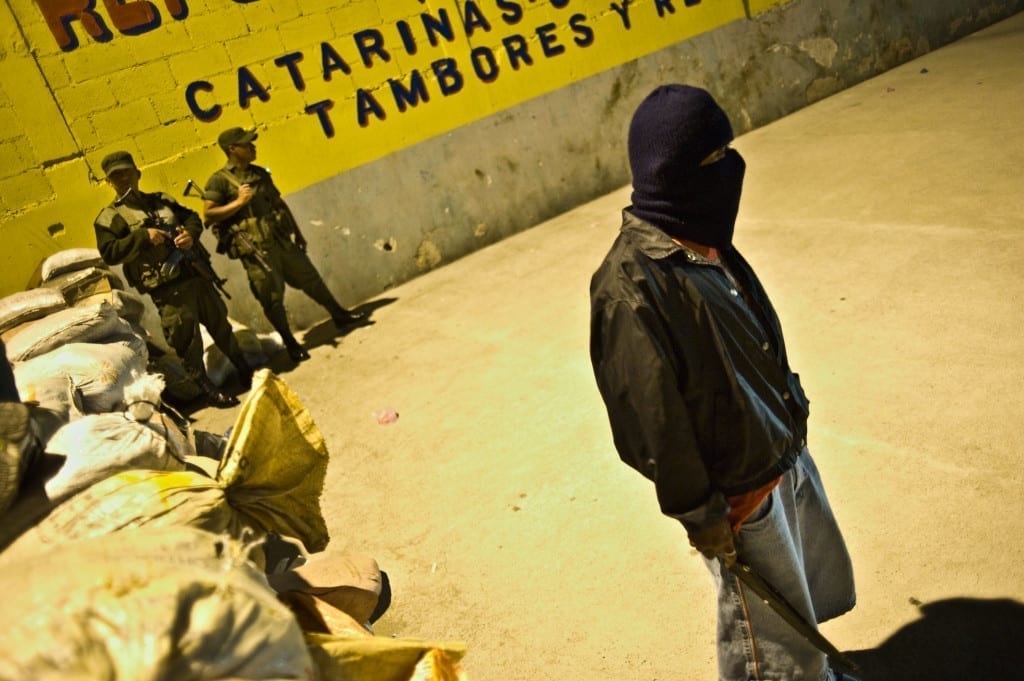
All images © Daniele Volpe
In many slums in Guatemala – one of the most violent countries in the world – ordinary citizens form vigilante groups to try to ensure community safety against the proliferation of cartel-related violence. Hiding their identities for fear of reprisal, they patrol the streets, armed, taking the law into their own hands.
. . .
Guatemala is one of three countries in the Northern Triangle buckling from the strain of the gang-related activity that permeates every aspect of society. It has long been besieged by criminality, much of it attributed to two prominent gangs – Mara Salvatrucha, or MS-13, and Barrio 18 – that, like locusts, have decimated many aspects of Guatemalan society.
Law enforcement – overwhelmed by the scale of violence and too often complicit in criminal activity – has struggled to cope, giving rise to clusters of ‘Guardianes del Vecindario’, or guardians of the neighbourhood, community-based volunteers that patrol the streets, themselves armed with crude, makeshift weapons and guns.
“There’s no denying it’s difficult to live here – Guatemala has one of the highest rates of violence in the world. But there are two Guatemalas: the urban one, fraught with chaos and criminality – the one everyone reads about; and the hidden one – where the Maya live – a community that suffers exclusion and racism. They are a beautiful people, and it’s simply impossible not to fall in love with them.”
More:
http://www.bjp-online.com/2015/06/photographing-the-patrulleros-the-violent-vigilantes-of-guatemala/
Poaching, Drugs, and Murder in Costa Rica: Shell Game (Part 1)
Poaching, Drugs, and Murder in Costa Rica: Shell Game (Part 1)
June 17, 2015 | 3:45 am
Watch Part 2
Watch Part 3
Since sea turtle conservation in Costa Rica began in the 1950s, conservationists and poachers have peacefully shared the beach. But the murder of the environmentalist Jairo Mora Sandoval in 2013 shocked the eco-friendly country and brought attention to a violent overlap between conservationism and drug trafficking in Costa Rica's abundant national parks and untouched coastlines.
With five percent of the world's biodiversity, the unique geography of Costa Rica is a hotspot for eco-tourism and conservation work. However, it is that same geography that makes the country so vulnerable to the violent drug trade that surrounds its borders. Costa Rica has become a major transshipment point for drug traffickers, with deadly consequences for those caught in the middle.
In part one of our three-part series, VICE News joins conservationists, poachers, and law enforcement in their struggle to maintain the unwritten law that governs egg gathering on the beach: finder's keepers.
Video at link:
https://news.vice.com/video/turtle-poaching-in-costa-rica-shell-game-part-1
Profile Information
Member since: 2002Number of posts: 160,527